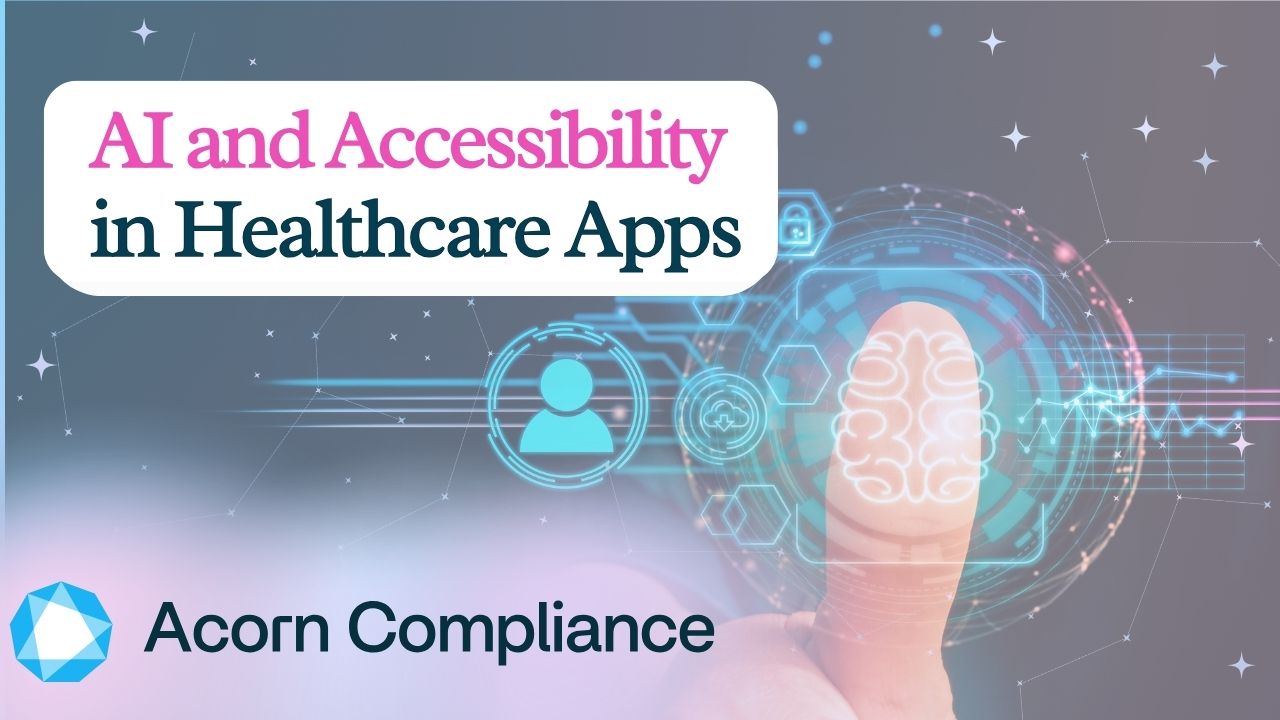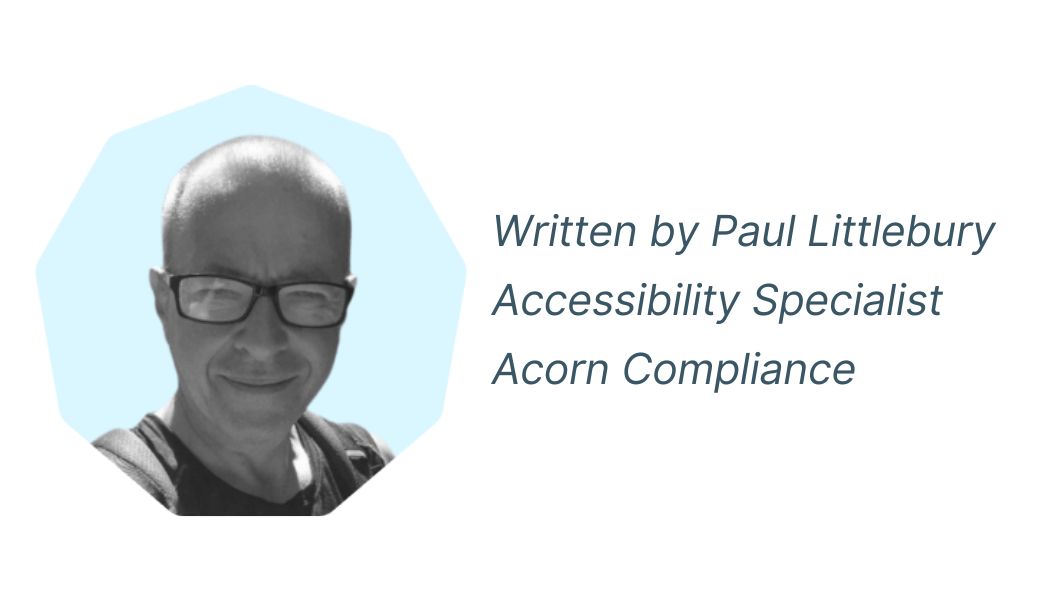Talk to us!
Book a complimentary call to get an expert opinion on where you are on your compliance journey.

Published:
July 16, 2025
-
5 min
read
AI and Accessibility in Healthcare Apps
We've broken down the ways AI is improving accessibility in healthcare tech.



Artificial intelligence (AI) is transforming the way healthcare apps are developed and used. By enabling more inclusive design and improving the accessibility of patient-facing technology, AI helps ensure that healthcare apps work for all users — including people with disabilities. Let’s explore how AI supports both developers creating healthcare apps and users engaging with them.
AI for Developers: Building More Accessible Healthcare Apps
Developers creating healthcare apps — whether for telehealth, medication management, fitness tracking, or patient portals — face the challenge of ensuring these tools are accessible. AI can help in several key ways:
Automated Accessibility Testing in Healthcare Apps
AI-based testing tools can automatically scan app code or user interfaces for accessibility issues, such as:
- Missing alt text for images in patient education modules
- Insufficient colour contrast in lab result charts
- Unlabelled form fields in appointment schedulers
Tool examples:
- Accessibility Insights and Deque Axe integrate into mobile app pipelines (e.g., React Native, Flutter) to catch issues early.
- Pa11y or aXe Accessibility Checkerz for web-based healthcare apps.
Real-world example:
A health startup developing a medication tracker app used automated AI accessibility testing during QA. This helped identify contrast issues and unlabelled buttons that would have posed challenges for users with vision impairments.
AI-Powered Code Suggestions for Accessible Components
AI code assistants help developers use accessible patterns, such as proper ARIA attributes or semantic components for app interfaces.
Tool examples:
- GitHub Copilot suggests accessible form components (e.g., labelled inputs in React Native).
- eslint-plugin-jsx-a11y enforces accessible coding practices in hybrid health apps.
Real-world example:
A telehealth app team integrated Copilot into their development environment and saw a reduction in accessibility defects, as Copilot recommended better input labels and heading structures during coding.
Natural Language Processing for Simplifying Health Content
Healthcare apps often present complex information (e.g., medication instructions, lab results). AI NLP tools help developers write app content that is clearer and easier for users with cognitive disabilities or low health literacy.
Tool examples:
- Grammarly and Hemingway App for simplifying language in patient instructions.
- Custom NLP tools to check readability of app copy.
Real-world example:
A diabetes app used AI NLP to rewrite its blood sugar alert explanations in plain language, making them easier to understand for users with mild cognitive disabilities.
Speech, Gesture, and Voice Integration for Alternative Input
AI APIs allow developers to add voice commands, speech input, or gesture controls to healthcare apps, making them more accessible to users with motor impairments.
Tool examples:
- Google Speech-to-Text or Azure Speech to add voice navigation to health apps.
- MediaPipe for gesture recognition (e.g., hands-free app controls during home exercise).
Real-world example:
A fitness rehab app for stroke patients integrated gesture controls using MediaPipe, allowing users with limited hand mobility to navigate exercise videos with simple arm movements.
AI for Users: Enhancing Accessibility in Healthcare App Experiences
AI helps users with disabilities engage more independently and effectively with healthcare apps.
Screen Reader and Voice Assistant Support
AI-powered screen readers and voice assistants help users who are blind or have low vision navigate health apps.
Tool examples:
- VoiceOver (iOS) and TalkBack (Android) enable access to app content.
- Siri or Google Assistant can trigger app functions (e.g., log a symptom).
Real-world example:
A medication reminder app integrated with Siri, allowing users with vision impairments to log doses or check schedules using voice commands.
AI Live Captioning in Telehealth Apps
AI-generated captions make video visits and health education content more accessible for people who are deaf or hard of hearing.
Tool examples:
- Zoom live captions in telehealth apps.
- Otter.ai integrated into meeting apps for session transcripts.
Real-world example:
A mental health teletherapy app embedded AI captioning so clients with hearing impairments could fully participate in sessions.
AI-Powered Image, Text, and Scene Recognition in Health Apps
AI can describe images or identify medications through apps for users with vision impairments.
Tool examples:
- Seeing AI helps read prescription labels or identify pill shapes.
- Be My Eyes (AI mode) assists with medical device readings.
Real-world example:
A medication management app partnered with Seeing AI to let users scan and confirm pill bottle labels before logging doses.
Predictive Input, Voice Typing, and Adaptive Interfaces
AI-driven predictive typing and adaptive interfaces help users with motor or cognitive disabilities interact more easily with apps.
Tool examples:
- Gboard or SwiftKey for voice typing in symptom diary apps.
- Eye-tracking + predictive text in custom assistive communication apps.
Real-world example:
An epilepsy tracking app allowed users with mobility impairments to log seizure details using voice typing and predictive text, reducing effort during post-seizure documentation.
Looking Ahead: Designing Ethical, Inclusive AI in Healthcare Apps
For healthcare apps to truly benefit all users:
- AI models must be trained on diverse user data — including people with disabilities.
- Patients with disabilities should be involved in co-design and testing.
- App developers must ensure transparency about how AI features (e.g., voice recognition, captions) work.
AI is helping developers build more inclusive products and empowering users with disabilities. By embedding AI thoughtfully — and with input from those it aims to serve — we can create healthcare apps that deliver equitable, high-quality experiences for all.





